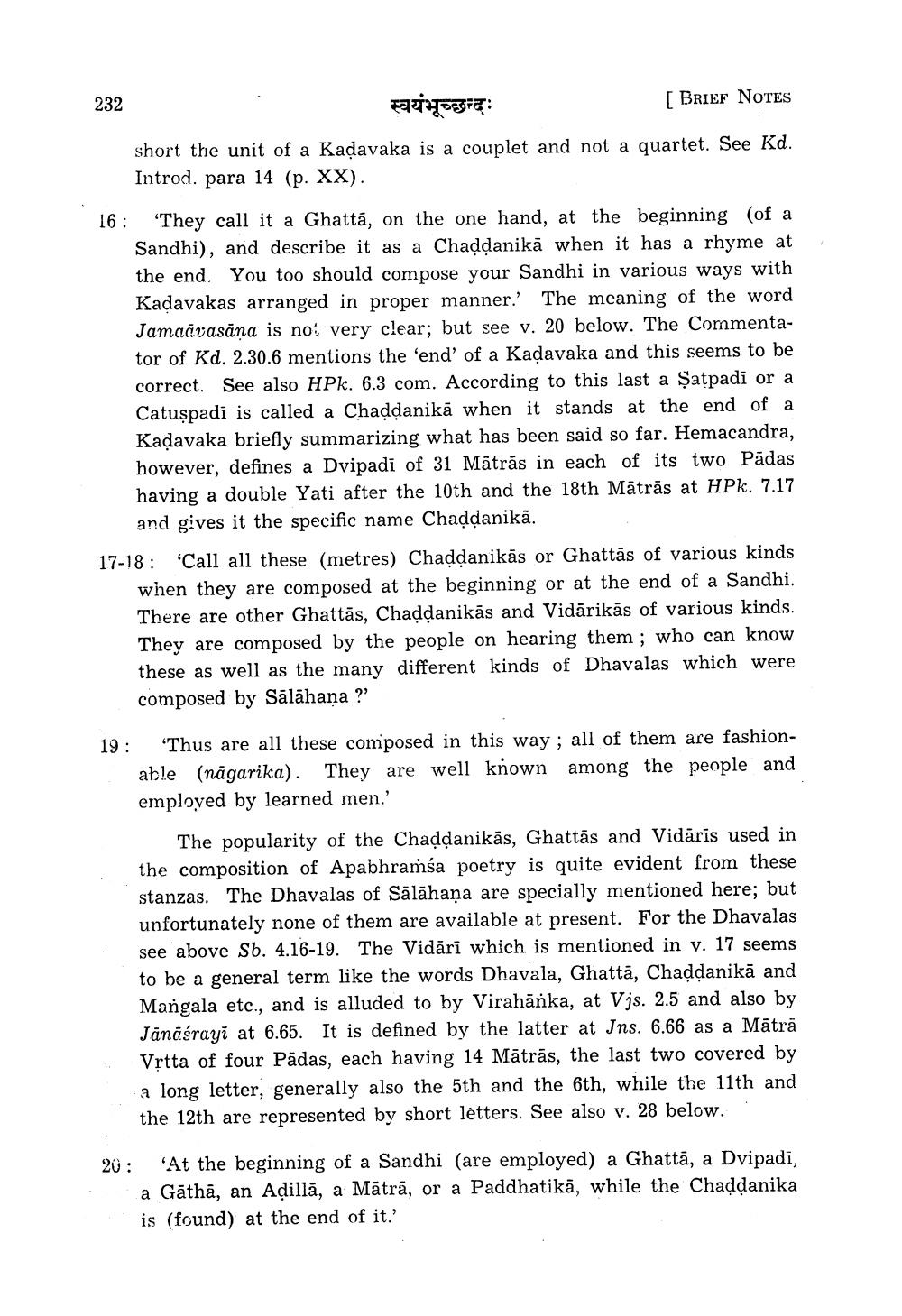________________
232
स्वयंभूच्छन्दः
[ BRIEF NOTES
short the unit of a Kadavaka is a couplet and not a quartet. See Kd. Introd. para 14 (p. XX).
16: "They call it a Ghattá, on the one hand, at the beginning (of a
Sandhi), and describe it as a Chaddanikā when it has a rhyme at the end. You too should compose your Sandhi in various ways with Kadavakas arranged in proper manner. The meaning of the word Jamaāvasāna is not very clear; but see v. 20 below. The Commentator of Kd. 2.30.6 mentions the end of a Kadavaka and this seems to be correct. See also HPk. 6.3 com. According to this last a Șatpadi or a Catuspadi is called a Chaddanikā when it stands at the end of a Kadavaka briefly summarizing what has been said so far. Hemacandra, however, defines a Dvipadi of 31 Mātrās in each of its two Pādas having a double Yati after the 10th and the 18th Mātrās at HPk. 7.17 and gives it the specific name Chaddanikā.
17-18: 'Call all these (metres) Chaddanikās or Ghattās of various kinds when they are composed at the beginning or at the end of a Sandhi.
ere are other Ghattās, Chaddanikās and Vidārikās of various kinds They are composed by the people on hearing them ; who can know these as well as the many different kinds of Dhavalas which were composed by Sālāhana ?
19: 'Thus are all these composed in this way; all of them are fashion
able (nagarika). They are well known among the people and employed by learned men.'
The popularity of the Chaddanikās, Ghattās and Vidāris used in the composition of Apabhramsa poetry is quite evident from these stanzas. The Dhavalas of Sālāhaņa are specially mentioned here; but unfortunately none of them are available at present. For the Dhavalas see above Sb. 4.16-19. The Vidāri which is mentioned in v. 17 seems to be a general term like the words Dhavala, Ghattā, Chaddanikā and Mangala etc., and is alluded to by Virahānka, at Vjs. 2.5 and also by Jānāśrayi at 6.65. It is defined by the latter at Jns. 6.66 as a Mātrā Vrtta of four Pädas, each having 14 Mātrās, the last two covered by a long letter, generally also the 5th and the 6th, while the 11th and the 12th are represented by short lètters. See also v. 28 below.
20: “At the beginning of a Sandhi (are employed) a Ghattā, a Dvipadi,
a Gāthā, an Adillā, a Mātrā, or a Paddhatikā, while the Chaddanika is (found) at the end of it.'




